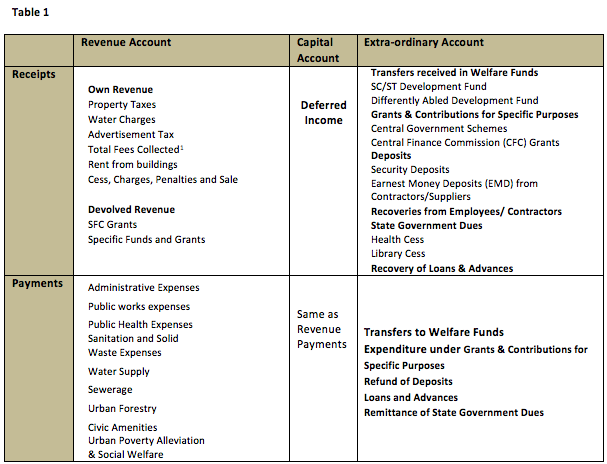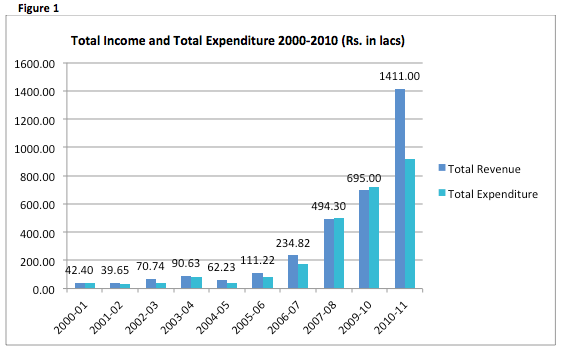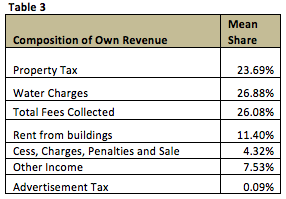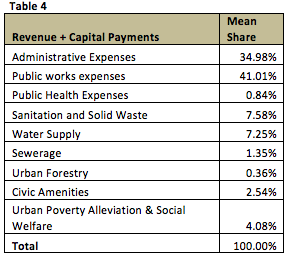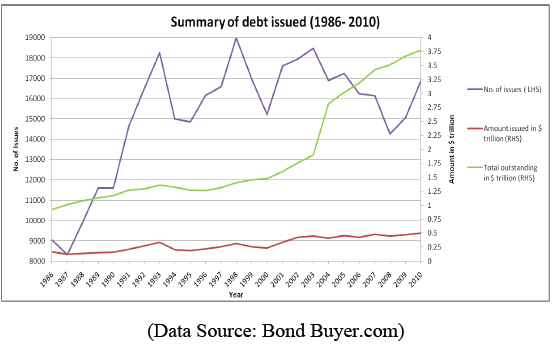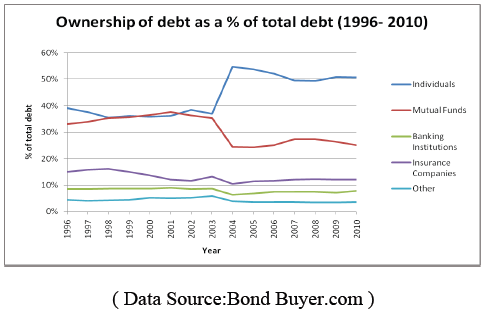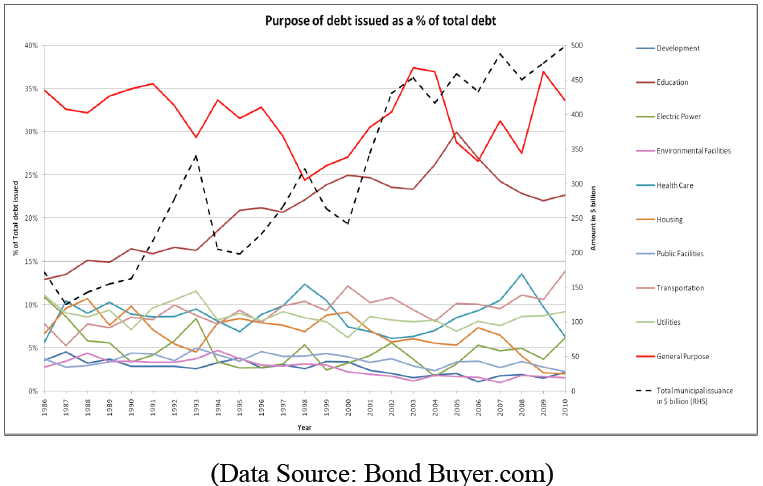By Vishnu Prasad, IFMR Finance Foundation
As a part of our series on Municipal Finance, we present a summary of Anand Sahasranaman’s paper on Pragmatic Municipal Finance Reforms in India, published in the November 2012 edition of Environment and Urbanisation Asia. The paper draws out the lessons that the South African and Brazilian experiences in property tax reform, institutional reform for effective service delivery, market making institutions for municipal debt and participatory budgeting hold for India. A working paper version may be accessed here.
South African Policy and relevance for India
In South Africa, the Municipal Systems Act (2000) requires each local government to prepare a holistic development plan, which is a long term (8-10 year) plan for provision of social and infrastructure services to the municipality. Financial planning forms a critical part of this plan as the municipality’s proposed infrastructure program must be supported by a sustainable financing structure. The Act also envisages the participation of the community as an equal partner in local government by requiring participatory and transparent budget practices, participatory decision making in pursuing municipal service partnerships and a public process of policy development in setting municipal tax rates and tariffs. In this section, we look at relevant features of South African policy.
1. Property Tax reform
Property taxes and user charges form the bulk of a municipality’s own sources of revenue and understanding the significance of uniform property taxes policy, South Africa passed the Municipal Property Rates Act in 2004. The act allows municipalities to set their own tax rates and requires them to conduct an annual review of the rates. The act specifies that valuations of property must be based on market value and done once every five years. As a note of caution, the act also mentions ‘constitutionally impermissible rates’, which it defines as rates that would unduly bias national economic policies, and free national movement of capital labour, goods and services
2. Definition of Minimum Service Levels
Under the Free Basic Services policy, water supply, electricity, sanitation and waste removal services of a stipulated minimum quality and quantity are to be provided by local governments to all households free of cost. A minimum level of service is also explicitly defined. For example, it is stipulated that each household should have access to 50 kwH of electricity per month, which is the amount of energy necessary for a month of basic lighting, small black and white TV, small radio, basic ironing and basic water boiling through an electric kettle
3. Corporatisation for efficient service delivery
Corporatisation refers to the separation of service delivery from policy and regulation, with the objective of providing for greater accountability and countering overt political interference in the day-to-day provision of services. It allows the municipality to set policy and service standards and hold the entity accountable for meeting these standards. It also offers greater autonomy and flexibility to the management of the corporatized entity to introduce commercial management practices.
Johannesburg Water (JW) was formed in 2002 as a corporate entity, wholly owned by the City of Johannesburg, and was mandated the responsibility of providing water and sanitation to the three million residents of the City of Johannesburg. In the subsequent years, JW introduced a slew of projects including repairing and upgrading water networks, installing prepaid meters to ensure more efficient use of water and carrying out capital works. The important thing to note is that JW has been able to provide affordable, clean water to Johannesburg while remaining a financially sustainable entity.
4. Creating a market maker for debt capital access
Activity in the South African municipal debt market ceased after the government stopped providing guarantees. Currently, the Municipal Finance Management Act (2003) shapes and directs the basis for municipal borrowing. There are two important players in the municipal debt market: Development Bank of Southern Africa (DBSA) which has moved away from being a lender to the larger municipalities to supporting market development through lending to smaller municipalities and introducing new financial instruments (such as partial credit guarantees); and the Infrastructure Finance Corporation (INCA), a private sector player, which has become a source of funding to many municipalities by swapping the municipal investment portfolios of insurance companies and pension funds for INCA bonds
5. Incentivising cities to compete on service provision
Once the minimum service levels have been met by cities, they must be incentivised to provide higher level services, while not compromising on fiscal discipline. One such incentive for performance can be competition between cities on better quality and level of services through an annual benchmarking exercise, where the service provision status of different cities is compared. In South Africa, this has resulted in a situation where cities such as Johannesburg and Durban compete with each other to provide better services.
Brazilian Policy and Relevance for India
After the financial crisis in the early 1990’s, Brazil pushed through a process of fiscal reform, holding local governments accountable for their revenue transfers. This resulted in much better outcomes in local government service delivery, especially in education and health, where service delivery showed a marked improvement once their funding was tied to achievement of service levels. Further, the Fiscal Responsibility Law (2000) aimed at creating greater stability, sustainability and transparency in municipal financing. The important tenets of the law included limitations on payroll expenditures and ability of the central government to block automatic transfers if a state spent itself into a deficit. Relevant features of Brazilian policy are outlined below.
1. Participatory Budgets
The Participatory Budget (PB) is a process of consultation and debate between citizens, civil society groups (labour unions, community organisations), technocrats and local government officials to decide on the priorities, plans and actions that need to be undertaken by local government to improve infrastructure and service delivery. Porto Allegre was the first city in Brazil to experiment with the concept of PBs. A World Bank case study indicates that after introduction of PBs, coverage of water supply and sewerage connections went up from 75% in 1988 to 98% in 1997, number of schools quadrupled with enrolments doubling, and health and education budgets increased from 13% to 40%. Citizens are also increasingly involved in decision making, participation going up from a mere 1000 in 1990 to about 40,000 at the end of the millennium
2. Property Taxes
Property taxes and tax on services constitute the bulk of the municipality’s own source revenues, about 60% (17% of total revenues). Municipalities in Brazil use the Capital Value method to assess the value of all land and buildings in urban areas. The tax is administered by each municipality and like in South Africa, all municipalities enjoy the freedom to set the tax rate and collect the tax. Property tax rates in Brazilian municipalities vary between 0.2% and 1.5% and valuations are adjusted each year for inflation.
Recommendations for Policy Reform in India
Based on lessons from South African and Brazilian policies, the paper lays out four sets of policy reform for India.
I. Constitutional Reforms
1. Municipalities should be empowered to set tax rates and levy user charges within reasonable limits so that they can plan effectively for infrastructure service provision. However, like in the case of South African policy, there must be restrictions on misuse of these. This can be achieved by requiring the State Finance Commissions to provide the limits within which the municipality can fix tax rates and charges every 5 years.
2. A uniform Property Taxation code should mandate a move towards a uniform method of property valuation across the country. The paper suggests that an Area based system can be adopted initially across the country as this tends to be an improvement over the current ARV system in terms equity as well as an increase in the property tax base.
3. Minimum service quality and quantity levels for basic infrastructure services need to be enumerated. While the enumeration of benchmarks will be an essential step forward, we need to ensure that ULBs are appropriately incentivised to meet these targets. This can be achieved by tying the achievement of minimum service delivery targets to accessing funds from central infrastructure grant programs.
II. Innovative Service Delivery
4. As the Johannesburg Water example showed, corporatisation of water supply or electricity supply entities as service providers under the ownership of the city with a clear mandate on providing quality and affordable services, can serve large cities well. While the corporatised entity remains focused on service delivery, all equity concerns are handled by the ULB on its own balance sheet. A direct link between the service provider and citizens can be designed through the sale of a stake in the corporatised entity to citizens of the ULB.
III. Vibrant Municipal Debt Market
5. In India, HUDCO could play the role of market maker rather than subsidised lender. The municipal debt market can be expanded if HUDCO took on the role of a market development through providing financial guarantees, rather than being the sole financier backed by state government guarantees The municipal debt market can also be a source of citizen participation in governance and the demand for accountability.
IV. Citizen Participation and Activism
6. Ward Committees and Area Sabhas need to be invigorated to become vehicles of participatory democracy, as envisioned by 74th CAA. This could be achieved through choosing a few cities that have a history of citizen activism and actively pushing the formation and functioning of these committees. The positive outcomes from these initial cities could be publicised widely to incentivise other municipalities to follow suit and make participatory democracy a reality.
7. Information dissemination can be used effectively as a tool of citizen participation. When information is available publicly, citizens can hold local governments responsible for delivery of services For example, the national government in Brazil launched an anti-corruption drive in 2003 which involved the random audit of municipal government budgets by an independent public agency and releasing these results to the public. This disclosure of information led to a significant reduction the re-election rates of mayors found to be corrupt.






